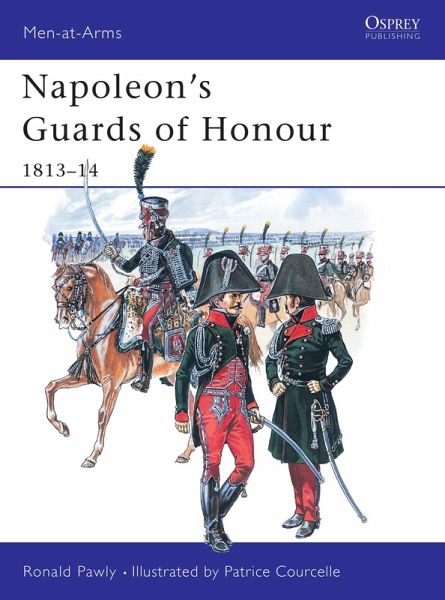
Napoleon's Guards of Honour (eBook, PDF)
1813-14
Illustrator: Courcelle, Patrice
Versandkostenfrei!
Sofort per Download lieferbar
9,95 €
inkl. MwSt.
Weitere Ausgaben:

PAYBACK Punkte
5 °P sammeln!
One of the least understood of Napoleon's corps were the four regiments of Gardes d'honneur, raised in 1813 during the frantic rebuilding of the French cavalry after the huge losses in Russia.Recruited from the leading social classes, uniformed and equipped at their own expense, and accompanied by servants to take care of such unpleasant chores as stable duty, these men were promised commissions as officers after a year's service in the ranks. Though spectacularly unready for combat upon their arrival with the army, the Guards of Honour would gain skill and confidence while serving alongside t...
One of the least understood of Napoleon's corps were the four regiments of Gardes d'honneur, raised in 1813 during the frantic rebuilding of the French cavalry after the huge losses in Russia.
Recruited from the leading social classes, uniformed and equipped at their own expense, and accompanied by servants to take care of such unpleasant chores as stable duty, these men were promised commissions as officers after a year's service in the ranks. Though spectacularly unready for combat upon their arrival with the army, the Guards of Honour would gain skill and confidence while serving alongside the élite cavalry of the Imperial Guard in the campaigns of Saxony and France, 1813-14, and distinguished themselves in battle at Hanau and Rheims.
This is the story of their organisation, uniforms and service, researched from rare archives and memoirs and illustrated with portraits, surviving uniform items, and meticulous colour plates.
Recruited from the leading social classes, uniformed and equipped at their own expense, and accompanied by servants to take care of such unpleasant chores as stable duty, these men were promised commissions as officers after a year's service in the ranks. Though spectacularly unready for combat upon their arrival with the army, the Guards of Honour would gain skill and confidence while serving alongside the élite cavalry of the Imperial Guard in the campaigns of Saxony and France, 1813-14, and distinguished themselves in battle at Hanau and Rheims.
This is the story of their organisation, uniforms and service, researched from rare archives and memoirs and illustrated with portraits, surviving uniform items, and meticulous colour plates.













